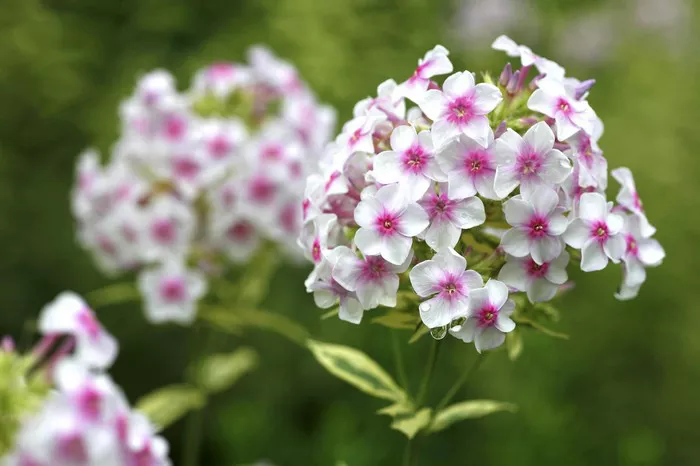Phlox flowers, with their vibrant hues and delicate petals, have long captivated the hearts of gardeners and nature enthusiasts alike. From their captivating colors to their unique growth patterns, phlox flowers offer a myriad of characteristics that make them a cherished addition to any garden or landscape. In this article, we delve into the enchanting world of phlox flowers, exploring their appearance, varieties, and cultivation techniques.
Understanding Phlox Flowers: A Visual Delight
Phlox flowers, members of the Polemoniaceae family, encompass a diverse group of species, each possessing its own distinct characteristics. One of the most striking features of phlox flowers is their blossoms, which come in a spectrum of colors ranging from pristine whites and soft pinks to vibrant purples and rich blues. These blossoms are typically composed of five petals arranged in a star-like formation, creating a visually captivating display.
The foliage of phlox plants varies depending on the species and variety. In general, phlox plants feature lance-shaped leaves that grow in an alternating pattern along the stems. The leaves may be glossy or matte, and their shades can range from deep green to variegated patterns, adding to the overall aesthetic appeal of the plant.
Exploring Phlox Varieties: A Kaleidoscope of Colors
Phlox flowers are renowned for their diversity, with numerous species and cultivars available to suit a wide range of tastes and preferences. Some of the most popular phlox varieties include:
1. Phlox paniculata: Commonly known as garden phlox or summer phlox, Phlox paniculata is prized for its large, fragrant blossoms and long blooming period. This variety typically grows in upright clumps, reaching heights of up to three feet. Gardeners can choose from a plethora of cultivars, including ‘David,’ which boasts pristine white flowers, and ‘Blue Paradise,’ known for its striking lavender-blue blooms.
2. Phlox subulata: Also known as creeping phlox or moss phlox, Phlox subulata is a low-growing species that forms dense mats of foliage, making it an excellent choice for ground cover or rock gardens. This variety produces an abundance of small, star-shaped flowers in shades of pink, purple, white, and red. ‘Emerald Blue’ and ‘Candy Stripe’ are popular cultivars appreciated for their vibrant colors and vigorous growth habits.
3. Phlox drummondii: Native to Texas and neighboring regions, Phlox drummondii, or annual phlox, is a charming species valued for its profusion of colorful blooms and compact growth habit. This variety is often grown as an annual, though it may self-seed in favorable conditions. ‘Twinkle Star’ and ‘Cherry Caramel’ are popular cultivars known for their eye-catching flowers and extended bloom times.
4. Phlox stolonifera: Also referred to as creeping phlox or woodland phlox, Phlox stolonifera is a shade-loving species that thrives in moist, well-drained soils. This variety produces clusters of fragrant flowers in shades of lavender, pink, and white, adding a touch of elegance to shaded garden beds and woodland settings. ‘Sherwood Purple’ and ‘Home Fires’ are sought-after cultivars appreciated for their striking blooms and spreading growth habit.
Cultivating Phlox Flowers: Tips for Success
Growing phlox flowers is relatively straightforward, provided you meet their basic requirements for sunlight, soil, and moisture. Here are some essential tips for cultivating healthy and vibrant phlox plants:
1. Sunlight: Most phlox varieties prefer full sun to partial shade, though some species, such as Phlox stolonifera, thrive in shady conditions. Ensure your phlox plants receive at least six hours of sunlight per day to promote robust growth and abundant flowering.
2. Soil: Phlox plants prefer well-drained, fertile soil with a slightly acidic to neutral pH. Incorporate organic matter, such as compost or aged manure, into the soil prior to planting to improve its texture and nutrient content. Avoid planting phlox in heavy clay soils, as they may become waterlogged and prone to root rot.
3. Watering: Keep the soil consistently moist but not waterlogged, especially during the growing season and periods of prolonged drought. Water phlox plants at the base to minimize the risk of foliar diseases, and avoid overhead watering, which can promote fungal infections.
4. Mulching: Apply a layer of organic mulch, such as shredded bark or straw, around the base of phlox plants to conserve soil moisture, suppress weed growth, and regulate soil temperature. Mulching also helps prevent soil erosion and insulates the roots during winter.
5. Fertilization: Feed phlox plants with a balanced, water-soluble fertilizer once a month during the growing season to promote healthy growth and prolific flowering. Alternatively, incorporate a slow-release granular fertilizer into the soil at the beginning of the growing season for sustained nutrition.
6. Pruning: Deadhead spent flowers regularly to prolong the blooming period and encourage the production of new blooms. Additionally, trim back any leggy or overcrowded growth to maintain a tidy appearance and improve air circulation around the plants.
7. Pest and Disease Control: Keep an eye out for common pests such as aphids, spider mites, and powdery mildew, especially during periods of high humidity. Use insecticidal soap or horticultural oil to control insect infestations, and apply fungicides preventatively to mitigate fungal diseases.
By following these guidelines and providing proper care, you can enjoy a spectacular display of phlox flowers in your garden year after year.
Conclusion
Phlox flowers, with their enchanting beauty and diverse array of varieties, are sure to delight gardeners and nature enthusiasts alike. Whether grown as vibrant borders, cascading ground covers, or charming container plants, phlox adds a touch of elegance and color to any landscape. By understanding their appearance, exploring their varieties, and following best cultivation practices, you can unlock the full potential of phlox flowers and create a stunning garden showcase for all to admire.


